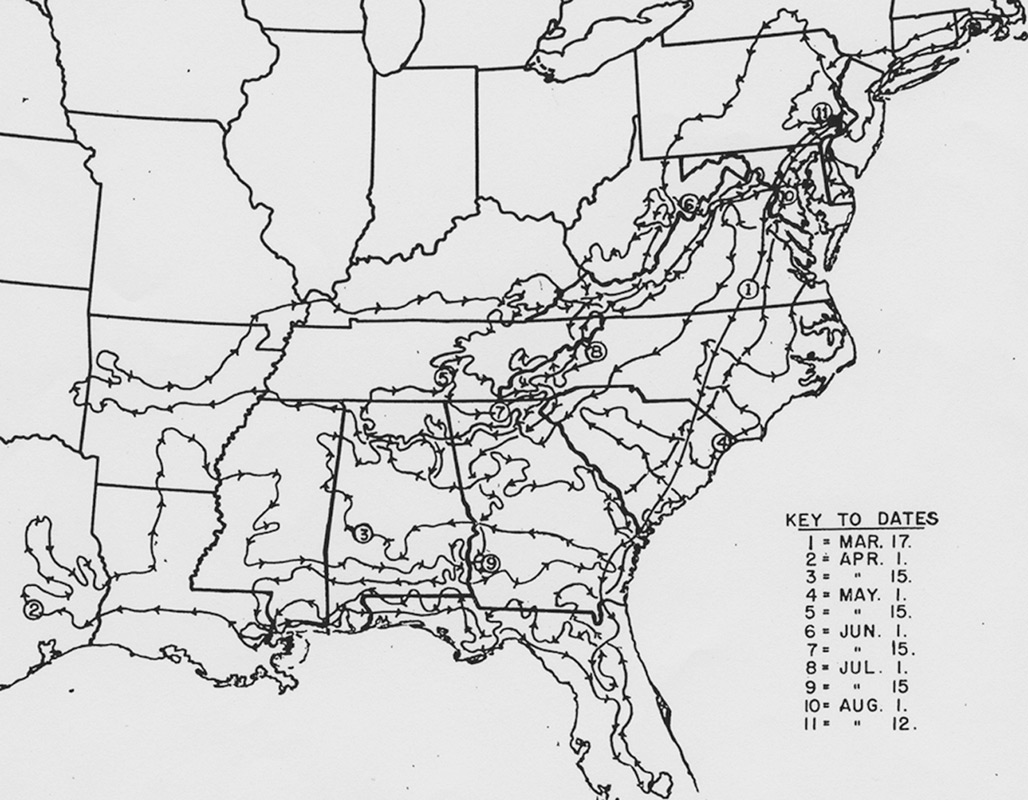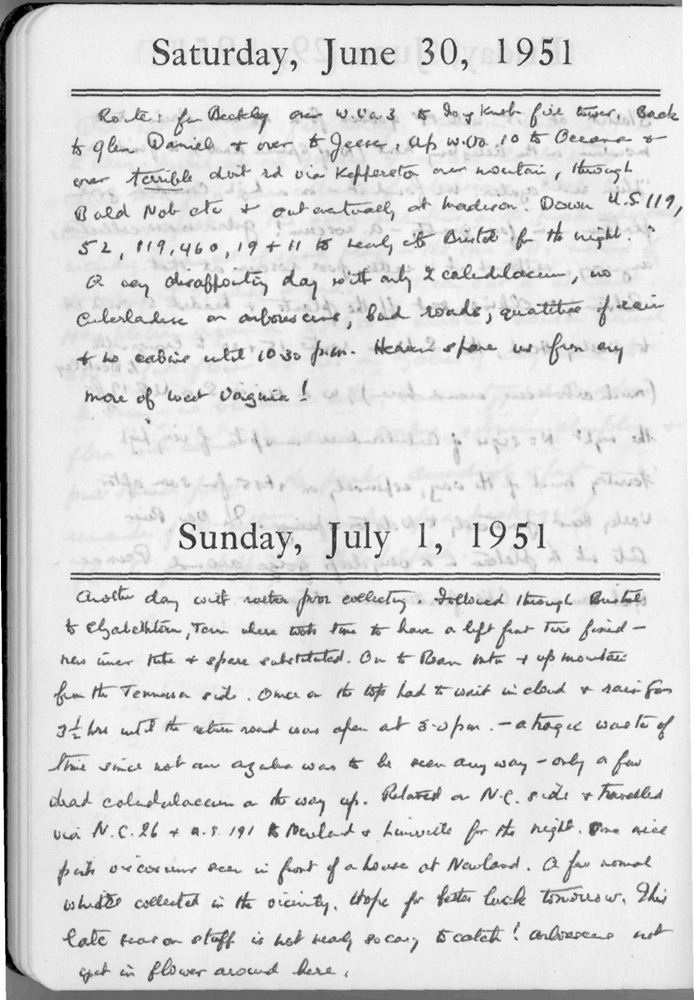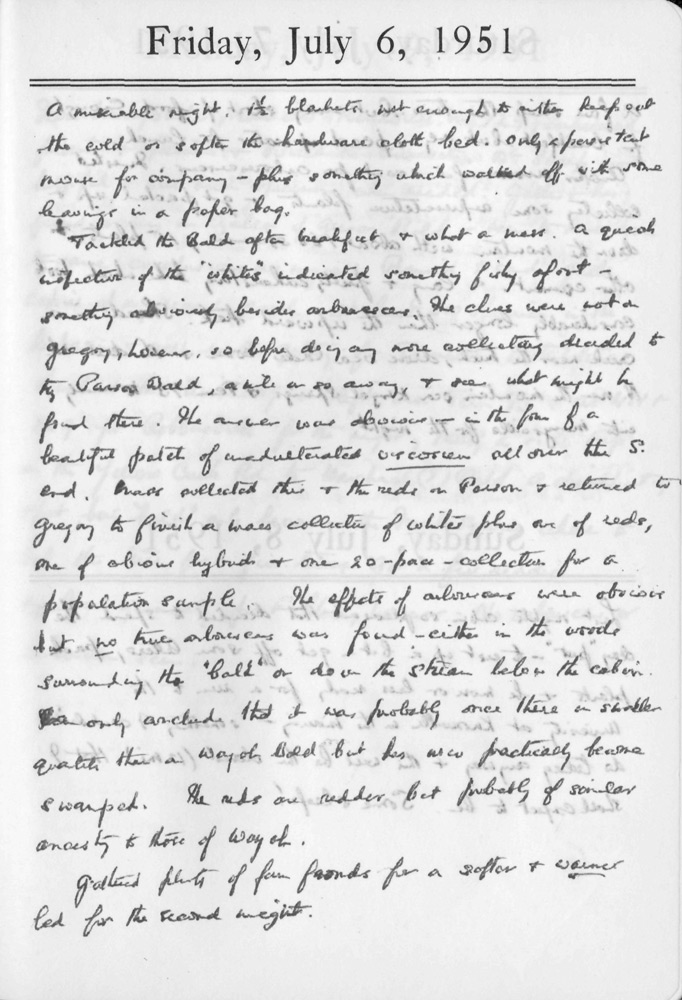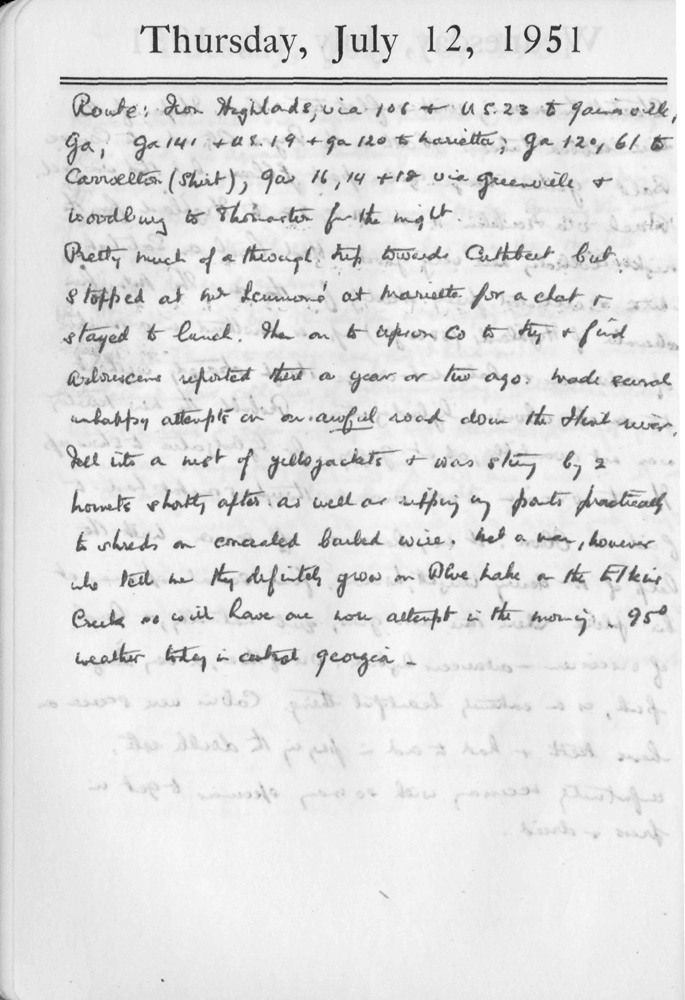'Meow Frivers' and 'Pole Limbs': In Search of Records of Native Azaleas
Sandra F. McDonald
Hampton, Virginia
In early 2005 the University of Virginia Library's Digital Research and Instructional Services began a project of considerable value to persons interested in the native azaleas, especially for those of us who like to "chase" the wild azaleas. A website has been created around the digitization of the notebooks of Dr. Henry T. Skinner and his famous native azalea collecting trip through the southeastern and eastern United States in 1951. The website is intended to celebrate the 50th anniversary of the 1955 publication of Dr. Skinner's results in his famous article "In Search of Native Azaleas." The notebooks and other of Dr. Skinner's manuscripts are in the Manuscripts Collection at the University of Virginia Library. The Manuscripts Collection also includes papers of others in the rhododendron world, such as Gable, Nearing, Kehr and Ring.
Dr. Henry Skinner was well known in the plant world, having been curator at Morris Arboretum of the University of Pennsylvania from 1940-1943 and from 1945-1952. In 1952 he became director of the U.S. National Arboretum in Washington, D.C. and continued in that position until 1973. Dr. Skinner received many prestigious awards including the Gold Medal of the American Rhododendron Society. He died in 1984.
Photographs of every page of Dr. Skinner's two collecting notebooks which briefly describe his thousands of collections using measurements, descriptions, and codes from two different color charts, as well as his trip route book (a few pages of which accompany this article) are on the website and can be enlarged so that the handwriting can be more easily read. Also part of the online collection is a list of 500 azaleas that Dr. Skinner sent back to the Morris Arboretum from his 1951 trip. Two other brief collecting trips, one June 1, 1952, to June 22, 1952, and the one June 13, 1959, to June 20, 1959, are at the end of the second collecting notebook. A transcription accompanies every page of the notebooks. Dr. Skinner's handwriting can be difficult to read at times, hence the unusual title for this article. One of his entries at first seemed to read "Limb pole to white." "Limb pole" was later found to actually refer to the pale limbs of an azalea flower. On March 27 in Walton County, Florida, Dr. Skinner describes the flower of a Rhododendron austrinum as having a "blotch meow frivers," and "meow friversz' has yet to be deciphered. As you read through Dr. Skinner's notebooks you will appreciate the tremendous amount of work that has been done for site visitors in the transcription of these notebooks. Dr. Skinner kept an expense notebook, too, but that has not been digitized and can be found in the Manuscripts Collection at the library.

|
|
The map of southeastern and eastern United States shows Dr. Skinner's travels for twenty-one weeks between March and
October 1951. He drove 25,000 miles searching for native azaleas, collecting 8,000 herbarium specimens and 500 living plants. |
Dr. Skinner's collecting expedition lasted twenty-one weeks and took place between March and October in 1951. He drove 25,000 miles through the southeastern and eastern United States searching for native azaleas during which time he collected 8,000 herbarium specimens and 500 living plants. Dr. Skinner wrote about his collecting trip in the Morris Arboretum Bulletin, Volume 6, numbers 1 and 2, 1955, pages 3-10 and 15-22. A transcription of this article is also available on the website. (The article was also reprinted in the Journal American Rhododendron Society in the Spring and Summer 2000 issues.) Many of the herbarium specimens that Dr. Skinner collected are still available at the Morris Arboretum. The Arboretum also has a list of the specimens. Even after 50 years some of the plants sent back to the Arboretum are still alive.
Dr. Skinner's expedition was initiated in cooperation with the Department of Botany of the University of Pennsylvania and the Academy of Natural Sciences and carried out with a grant from the American Philosophical Society. According to his account "In Search of Native Azaleas" in the Morris Arboretum Bulletin, he made extensive preparations including "a map of the eastern United States which could show by letter and color key the geographic distribution of wild azaleas likely to be in flower during each week from mid-March to mid-August, as discovered from numerous herbarium specimens previously studied." The equipment he took along in the arboretum-provided Chevrolet delivery truck was diverse. He had piles of presses, blotters, newspapers, an electric drier, digging tools, shears, burlap, packing materials, cameras, labels, tags, notebooks, and personal living needs for at least a month at a time. His truck had been picked for travel over first class roads as well as trackless hillsides, and through cold spring floods and droughty summer days of 104 degrees.
The transcriptions of the notebooks as well as the 1955 article from the Morris Arboretum Bulletin can be searched by using the search page of the site. Photographs of native azaleas and distribution maps for the species are also on the website.

|
Sunday, July 1, 1951
|

|
|

|
|